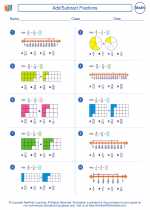Intercept
In mathematics, an intercept refers to the point at which a line or curve crosses the x-axis or y-axis on a coordinate plane. There are two types of intercepts: the x-intercept and the y-intercept.
X-Intercept
The x-intercept is the point at which a line or curve crosses the x-axis. It is the value of x when y is equal to zero. To find the x-intercept, set y to zero and solve for x.
For example, if you have the equation of a line in the form y = mx + b, where m is the slope and b is the y-intercept, the x-intercept can be found by setting y to zero and solving for x, as follows:
0 = mx + b
-b = mx
x = -b/m
Y-Intercept
The y-intercept is the point at which a line or curve crosses the y-axis. It is the value of y when x is equal to zero. To find the y-intercept, set x to zero and solve for y.
Using the same example equation y = mx + b, the y-intercept can be found by setting x to zero and solving for y, as follows:
y = m*0 + b
y = b
Study Guide
When studying intercepts, it's important to understand the concepts of the x-intercept and y-intercept, as well as how to find them in various mathematical representations such as equations, graphs, and tables of values.
Here are some key points to remember when studying intercepts:
- The x-intercept is the point at which a line or curve crosses the x-axis, and the y-coordinate of this point is always zero.
- The y-intercept is the point at which a line or curve crosses the y-axis, and the x-coordinate of this point is always zero.
- To find the x-intercept, set y to zero and solve for x. To find the y-intercept, set x to zero and solve for y.
- Intercepts can be graphically represented as points on a coordinate plane, algebraically represented as solutions to equations, or numerically represented in tables of values.
Understanding intercepts is crucial in analyzing and graphing linear equations and functions, as well as in solving real-world problems related to lines and curves.
Practice identifying and calculating intercepts in different contexts, and make sure to understand the relationship between intercepts and the overall behavior of a line or curve.
Now that you have a strong understanding of intercepts, you're ready to tackle problems involving lines and curves in the coordinate plane!
.◂Math Worksheets and Study Guides Fifth Grade. Add/Subtract Fractions

 Worksheet/Answer key
Worksheet/Answer key
 Worksheet/Answer key
Worksheet/Answer key
 Worksheet/Answer key
Worksheet/Answer key
